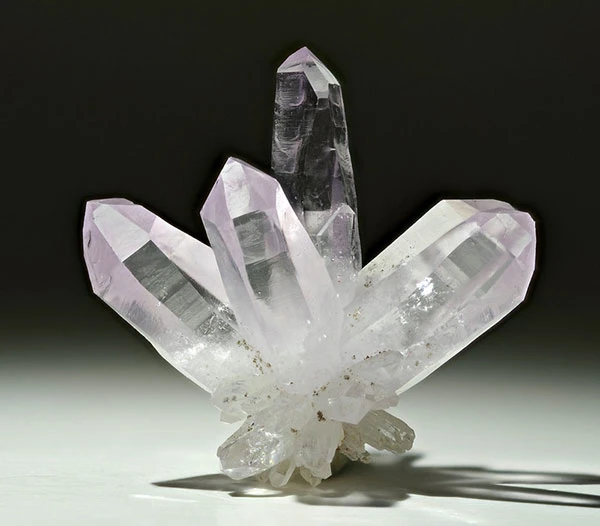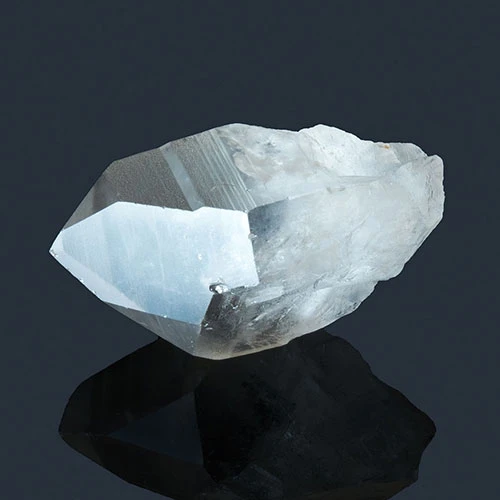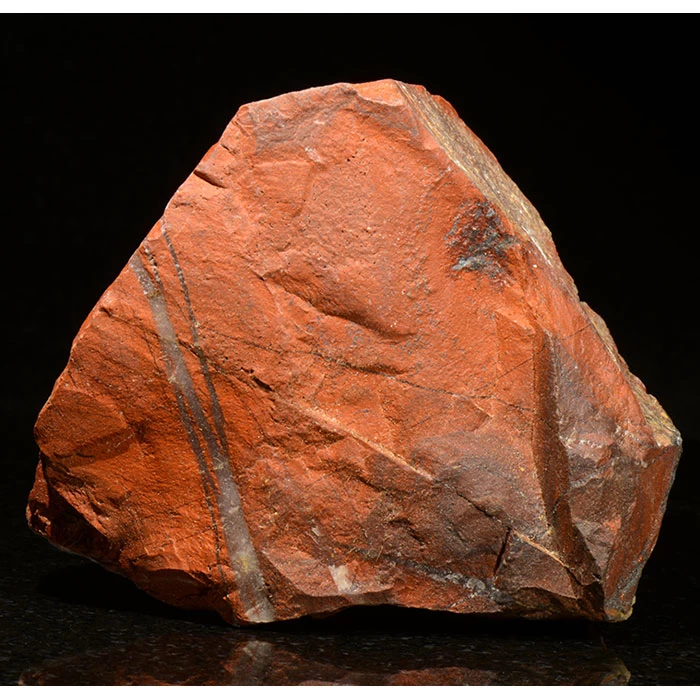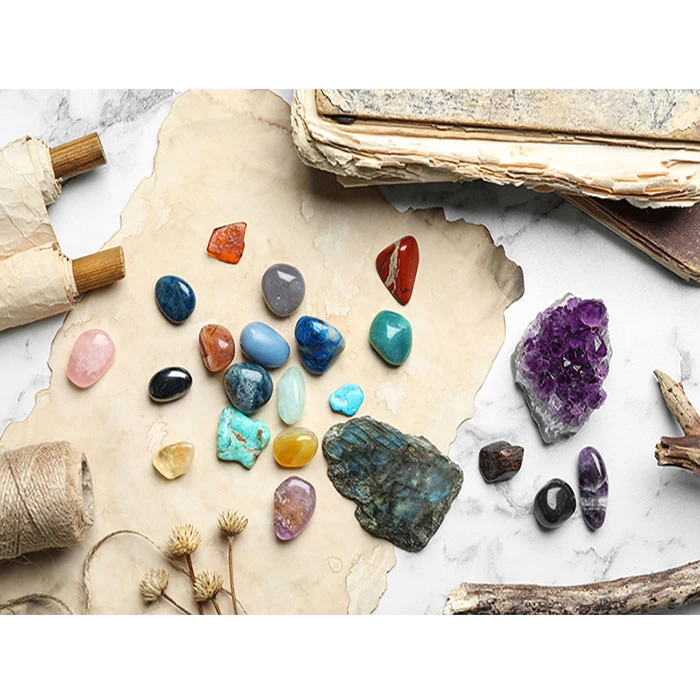
| Contents 1. Making Sense of... 2. Why Crystals are Not Rocks/Minerals 3. What are Rocks? Reading time: 9 - 11 minutes |
Making Sense of Crystals, Rocks, and Minerals
Crystals, rocks and minerals are all part of the same geological story that began when the Earth formed around 4.5 billion years ago, yet each term refers to something slightly different.
When being discussed in general terms, these three words are often used, albeit incorrectly, interchangeably. In recent years, the word crystals has started being used for anything from a raw mineral specimen to a polished stone carving, which has created even more confusion.
The study of crystals is crystallography, rocks is petrology, minerals is mineralogy, and gemstones, gemology. I've discussed gemstones in a separate article, which you can read here.
These subjects fall under the umbrella of geology, which is the study of the Earth, its history, the rocks of which it's constructed, their structure, where they came from, how they have changed over time and how they continue to change.
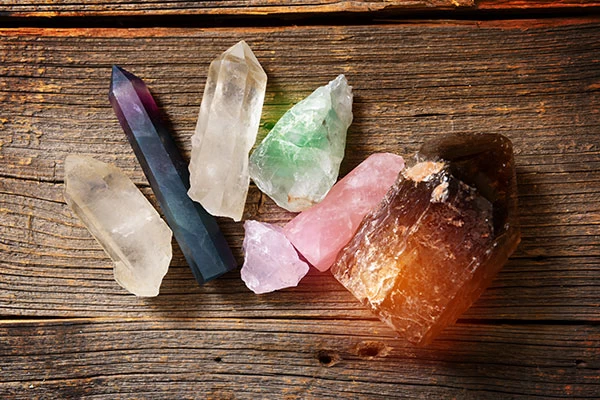
A mineral is a naturally occurring solid with a specific chemical composition and an internal crystalline structure. Chemical composition refers to the identity and number of chemical elements in a compound.
Most minerals are chemical compounds, meaning they're made up of two or more chemical elements.
For example:
• Water is H₂O, meaning it always contains 2 hydrogen atoms and 1 oxygen atom.
• Quartz is SiO₂, meaning 1 silicon atom and 2 oxygen atoms.
• Halite (salt) is NaCl, meaning 1 sodium atom and 1 chlorine atom.
If the chemical composition changes, a different mineral forms.
Pyrite and marcasite have an identical chemical composition. Both are iron sulphide minerals (a chemical compound of iron and sulphur). The mineral that forms depends on how it crystallises, in other words, on its internal crystal structure.
Minerals that contain just one chemical element are known as native elements. A chemical element contains just one type of atom. These include:
A mineral must also have an internal crystalline structure, which means the atoms of its chemical elements are arranged in an orderly, repeating, three-dimensional pattern. This internal arrangement determines many of its physical properties, including hardness and the external geometric shape that a crystal can grow into when space allows.
The crystal structure of a quartz crystal will always be the same. If the basic chemical formula were different, it would not be quartz.
A rock does not have a fixed chemical composition or a single internal crystalline structure because it is made from several different minerals, each with its own internal arrangement. An example is granite, which is composed of quartz, feldspar, mica, and sometimes other minerals.
A mineral can be compared to an ingredient, like an onion or a carrot. A rock is the final dish made from many ingredients. It may contain just one ingredient or several, all mixed or intergrown together. 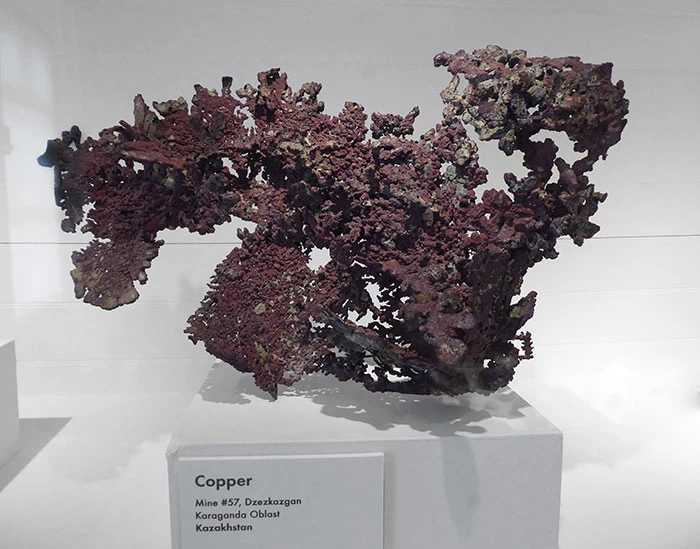
Why Crystals are Not Rocks or Minerals
Crystals are not the same as rocks or minerals because a crystal is the pattern that atoms form as they grow. Rocks and minerals are the natural materials that may contain crystals.
A rock is a naturally occurring solid made up of one or more minerals or mineraloids. Rocks tend to be quite hard, hence the idiom hard as a rock. Crystals and minerals can be very soft.
In geological terms, a crystal is a naturally occurring, inorganic solid composed of a highly ordered arrangement of atoms. The atoms form a repeating, three-dimensional pattern known as a crystal lattice.
A single crystal can contain quadrillions of atoms. The way they arrange themselves when they come together is called the crystal structure.
Although the atomic structure influences a crystal’s overall shape, other factors, such as growth conditions and impurities, can also affect the crystal's final appearance.
The process of crystal formation and growth is known as crystallisation.
Some crystals are difficult to see because of their size (microcrystalline) or because they're tightly interlocked or fused together. Others are large enough to be seen with the naked eye (macrocrystalline).
Matter is any naturally occurring substance that has mass and occupies space. The three states of matter are solids, liquids, and gases. All three are made up of atoms, but the specific arrangement differs for each.![]() (*)
(*)
For a solid to be crystalline, it must have a highly ordered, repeating arrangement of atoms (crystal lattice). If the atoms are arranged in a disorganised or random pattern, the material will be non-crystalline. An example is obsidian, which is volcanic glass.
Obsidian, a natural volcanic glass, is a non-crystalline solid. Window glass, a man-made material produced by heating sand, is also non-crystalline. The most common mineral in sand is quartz, which is a crystalline form of silicon dioxide.
Naturally occurring non-crystalline solids are correctly known as mineraloids. The word 'amorphous,' meaning 'having no specific shape or form,' is also used, but refers to any material, whether it's natural or man-made. 
Crystals often grow when liquids cool and solidify, especially magma or lava. If they cool too fast, atoms may not have time to grow.
Crystals can also form through the precipitation of minerals from water. Water can only hold a limited amount of dissolved minerals and salts. When their concentration becomes too high, the excess can no longer stay dissolved, causing the particles to come together and form a solid.
An example of a mineral that crystallises in this way is halite, which is salt.
Impurities within a crystal can be partly or fully responsible for changes in its colour. An example is amethyst, which is quartz coloured by trace amounts of iron.
Heat can also enhance or change the colour of some rocks and minerals by altering the state of these impurities or defects within the crystal structure.
What are Rocks?
Rocks are composed of at least one mineral, but usually more. Although around 5,000 minerals exist on Earth, many rocks form from some of the most common.
Although the minerals in rocks are crystalline, the rock itself is not considered to be crystalline. Rocks are aggregates, meaning they’re made up of many different minerals combined into one solid mass.
In many rocks, the minerals are intergrown or interlocked, forming a solid mass without distinct crystal boundaries. Pressure, temperature, and other minerals influence the arrangement of the minerals, leading to different textures and structures.
Some rocks, particularly igneous and metamorphic, contain visible crystals. Granite is a good example, where slow cooling of magma or intense pressure and heat allowed larger crystals to grow over long periods of time.
Even when larger crystals are present, a rock is not one single crystal. It's a mass of many minerals grown together.
A helpful way to visualise this is to think of a rock as a tightly packed mass of mineral grains. Each grain is a separate mineral, and the size, shape, and how they fit together determine the rock’s hardness and porosity.
Tightly packed, angular grains create hard, non-porous rocks by leaving little space for moisture. Finer, rounded grains that don't fit tightly together leave gaps for air and water, making the rock softer and more porous.
Igneous rocks form when molten rock below the surface (magma) or lava above the surface, cools and solidifies.
Sedimentary rocks form from layers of sediment that accumulate, often underwater. Over time, pressure compacts the layers, and minerals bind them together through a process known as cementation.
When exposed to intense heat or pressure, rocks undergo metamorphism, often deep within the Earth’s crust. This transformation can create new rock types and minerals as existing ones change in response to the conditions.
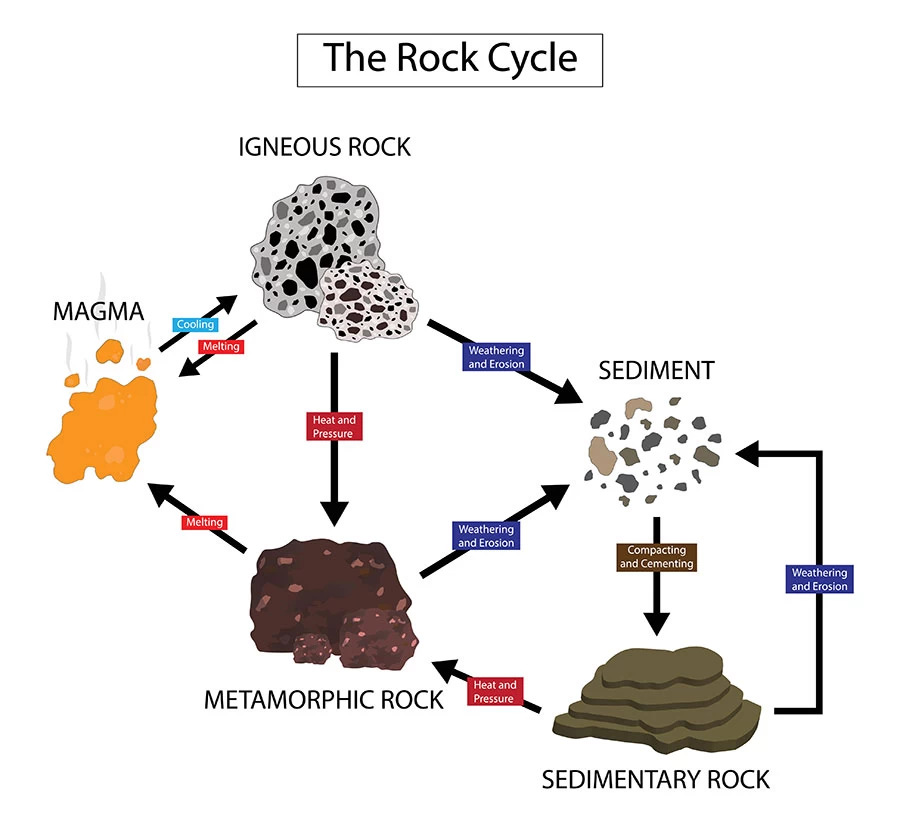
Article Photos
Pop-up photos: Pyrite, marcasite, gold, silver: Courtesy of Stan Celestian. Sulphur: Courtesy of Géry Parent.
The native copper is housed in the Harvard Museum of Natural History, Massachusetts, USA. The photo, by Stone Mania, is clickable and redirects to the original image.
The Lemurian quartz crystal, black obsidian, and amethyst geodes are from our collection.









